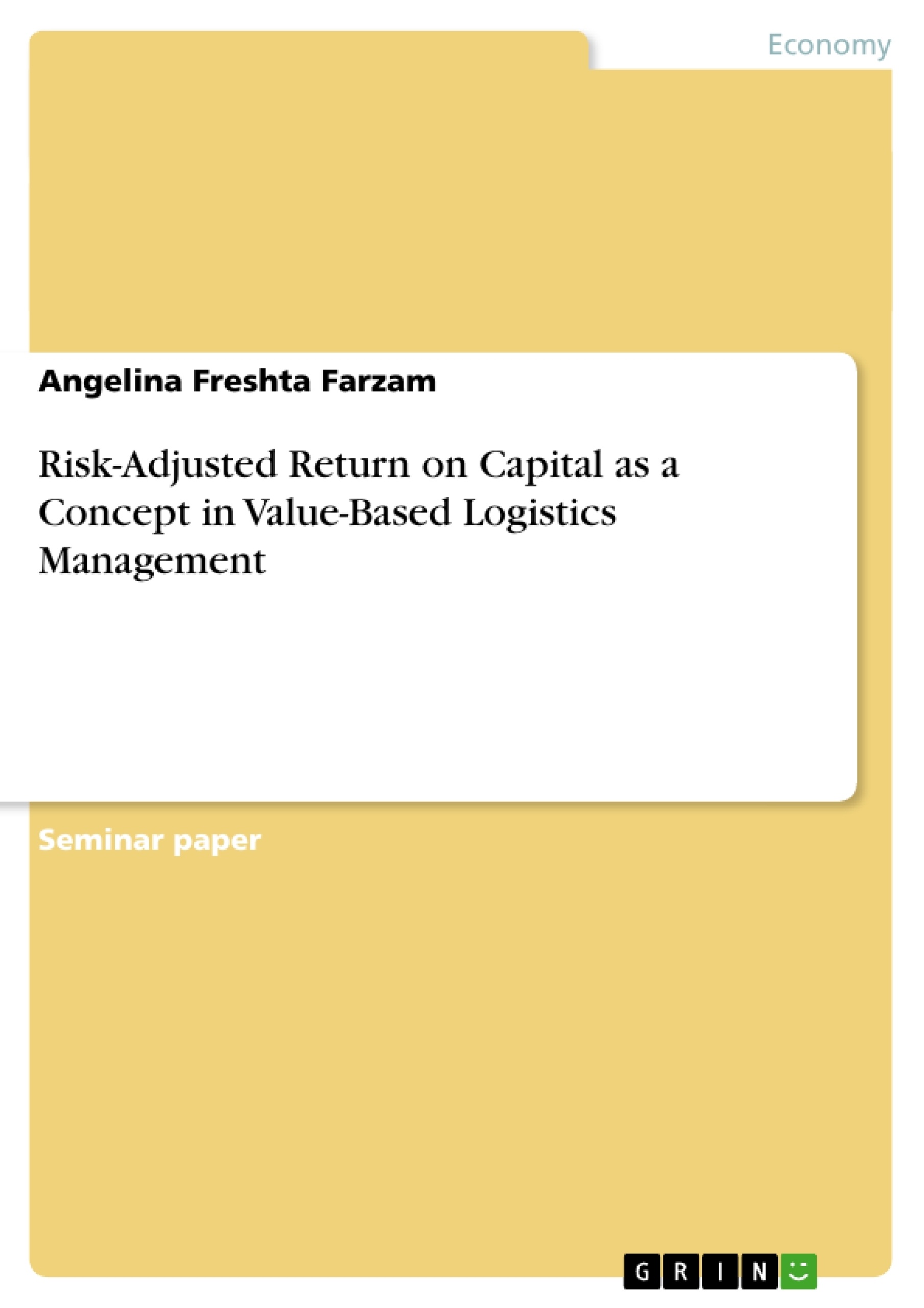Continued deflationary trends in many markets around the world are creating
greater pressure for risk prevention in order that margins can be maintained.
Customers and consumers are increasingly value driven. In this challenging
world, there is a growing recognition that creative pricing strategies combined
with effective supply chain management provide opportunities for significant risk
capital cost reduction and yet increased profits.
This paper presents evidence and a new model to support this viewpoint and
suggests an approach to supply chain alignment that can enable cost reduction
opportunities to be identified and higher profits to be achieved through
collaborative strategies.
For a good risk management the bank uses, among other figures, RORAC,
RAROC and RARORAC to minimize the risk that each credit-borrower brings
along. In the financing sector, therefore, they created the credit-ranking system.
Now the next question would be, why not implement that credit-ranking in
logistics to minimize risks in order to create a certain risk capital as security.
Especially in the airfreight segment, where there is a lot of environmental risk
involved, there has to be created a new way to prevent from high unexpected
losses.
The question that has to be answered
Inhaltsverzeichnis (Table of Contents)
- Introduction
- RAROC as a Financial Instrument to Increase Value of a Company
- RAROC
- Value-Based Management (VBM)
- Rating
- The New Era of Risk Prevention in Logistics: Risk-Adjusted Price-Rating or Risk-Based Bonus?
- Conclusion
Zielsetzung und Themenschwerpunkte (Objectives and Key Themes)
This paper aims to demonstrate the potential of the Risk-Adjusted Return on Capital (RAROC) concept as a financial instrument to mitigate risk and enhance value creation in logistics. The paper presents a new model to support this view, proposing a supply chain alignment approach that enables cost reduction opportunities and higher profits through collaborative strategies.
- The application of RAROC in logistics as a tool for risk management and performance evaluation
- The relationship between RAROC and value-based management (VBM) in logistics
- The potential for implementing a credit-ranking system in logistics, similar to banking, to manage risk and allocate capital
- The challenges of integrating risk-adjusted pricing in logistics without deterring clients
- The need for a comprehensive understanding of the RAROC concept and its application to enhance value creation in the logistics industry
Zusammenfassung der Kapitel (Chapter Summaries)
- The Introduction highlights the increasing pressure on logistics companies to manage risk and maintain margins in a deflationary environment. It emphasizes the need for creative pricing strategies and effective supply chain management to reduce capital costs and increase profits. The chapter introduces the concept of RAROC as a potential solution and outlines the paper's objective to explore its application in logistics.
- Chapter 2 focuses on RAROC as a financial instrument for enhancing a company's value. It explores the concept of RAROC in detail, examining its origins in the banking system and its application for risk management and performance evaluation. The chapter also discusses the relationship between RAROC and VBM, explaining how the concept can be used to optimize capital allocation and improve overall profitability.
Schlüsselwörter (Keywords)
Risk-Adjusted Return on Capital (RAROC), Value-Based Management (VBM), Logistics, Risk Management, Capital Allocation, Performance Evaluation, Supply Chain Management, Credit-Ranking, Risk-Adjusted Pricing.
- Quote paper
- Angelina Freshta Farzam (Author), 2007, Risk-Adjusted Return on Capital as a Concept in Value-Based Logistics Management, Munich, GRIN Verlag, https://www.grin.com/document/135548



